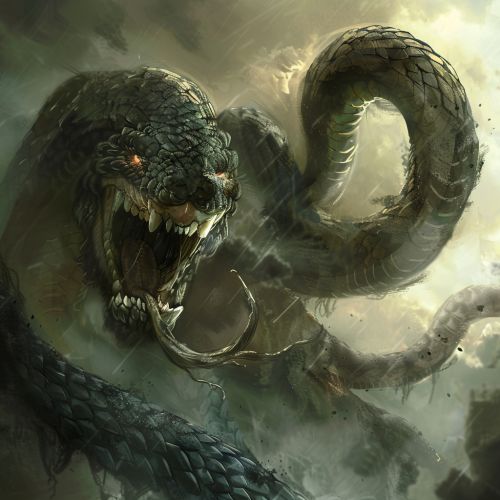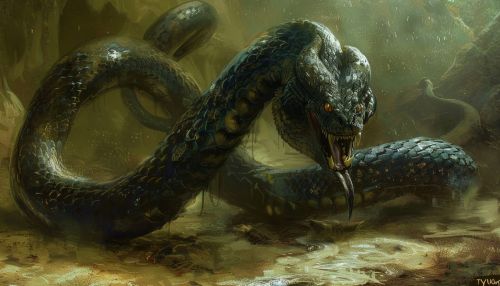Typhon
Origins and Mythology
Typhon, also known as Typhoeus, is a prominent figure in Greek mythology, often referred to as the "Father of All Monsters." He is a monstrous serpentine giant and one of the deadliest creatures in Greek mythology. Typhon is the son of Gaia, the earth goddess, and Tartarus, the infernal region beneath the earth.


Typhon's birth was a response to the Olympians' overthrow of the Titans, Gaia's first set of offspring. Gaia, seeking revenge, mated with Tartarus to give birth to Typhon, a creature of such terror and strength that he challenged the might of Zeus himself. Typhon is often depicted with a human upper body and a serpentine lower body. He is said to have a hundred dragon heads, although this number varies among different myths. His eyes were said to flash fire, and he had a multitude of fearsome wings.
Battle with Zeus
The most significant myth involving Typhon is his cataclysmic battle with Zeus. Typhon challenged Zeus for supremacy of the cosmos, leading to a monumental clash. The battle was so fierce that it caused cosmic instability, with earth quaking and rivers boiling. Typhon managed to temporarily defeat Zeus by capturing him and removing his sinews. However, Hermes and Pan recovered Zeus's sinews and restored him to full strength.
Once restored, Zeus fought back with his thunderbolts and a sickle, the same weapon used by his father Cronus to castrate his grandfather Uranus. After a prolonged battle, Zeus finally defeated Typhon by trapping him beneath Mount Etna, where he is said to remain to this day. The volcanic eruptions of Etna are often attributed to Typhon's fiery breath and the movements of his trapped body.
Offspring
Typhon's union with his sister, Echidna, produced many of the most famous monsters in Greek mythology. These include the Lernaean Hydra, the Chimera, the Sphinx, the Nemean Lion, the Cerberus, and the Eagle that tormented Prometheus. Each of these creatures played a significant role in various myths and heroic legends, notably the Twelve Labors of Hercules.
Cultural Significance
Typhon's influence extends beyond mythology and has permeated various aspects of Greek culture. He is often used as a symbol of destructive forces and the chaos that opposes the divine order. In literature, Typhon is often used as a metaphor for nature's destructive forces. In ancient art, Typhon was depicted as a monstrous, serpentine giant, a testament to the fear and awe that he inspired.
